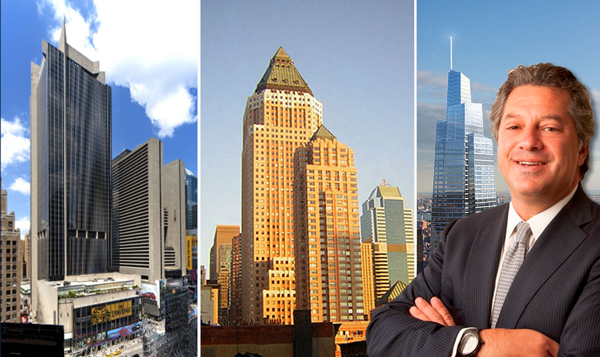Trending
Holliday says stock volatility will mean more partnerships for SL Green
REIT CEO talks sources of funding, Amazon at Columbia University forum

Expect SL Green Realty to bring in more private partners on its big projects, at least as long as the real estate investment trust’s stock price bounces up and down wildly.
REIT stock prices have spiked and dipped dramatically, especially over concerns of rising interest rates. SL Green’s stock price, for instance, plunged nearly $40 from a price of just above $119 per share in November 2015 to about $81 in February 2016.
That volatility creates an unreliable source of capital for long-term development projects, SL Green CEO Marc Holliday said Friday during a real estate forum hosted by Columbia University at the Mandarin Oriental hotel at the Time Warner Center.
“What that volatility does, is it causes us to look beyond the public markets, especially for securing development capital,” he said.
Holliday pointed to the joint venture the company did with the National Pension Service of Korea at One Vanderbilt and the pending deal with RXR Realty to buy a stake at One Worldwide Plaza as examples.
He also cited a deal with an unnamed investor at 1515 Broadway as the kinds of deals the company will “probably continue to be doing until the metric changes and equity sources for big public companies become a little bit more reliable, properly priced and sustainable.” China Investment Corporation (CIC) was said to be nearing a deal to buy a stake in the tower as of June.
“If you have shareholders like I do, they say, ‘Well maybe that’s too much supply. Maybe we don’t want that much supply. Maybe it’s better to have a moat around what you own and just keep it like that,’” he said.
When it comes to the other side of new development, Holliday said he calculates about 13.6 million square feet of net new supply in Manhattan’s office market to come online over the next five years. Employment numbers, he said, should be able to absorb that additional supply, “so long as those jobs keep being created.”
Of course, one of the biggest issues pertaining to jobs is the city’s bid to lure Amazon’s new headquarters to the Big Apple, which is expected to bring with it 50,000 new jobs that would require as much as 8 million square feet of office space past 2027.
Holliday said it would be great if city and state officials could entice the company to the city, but not if the public subsidies become too costly.
“Put your best foot forward to attract a tenant like that, so long as the return is there,” he said. “It’s not an emotional exercise.”




